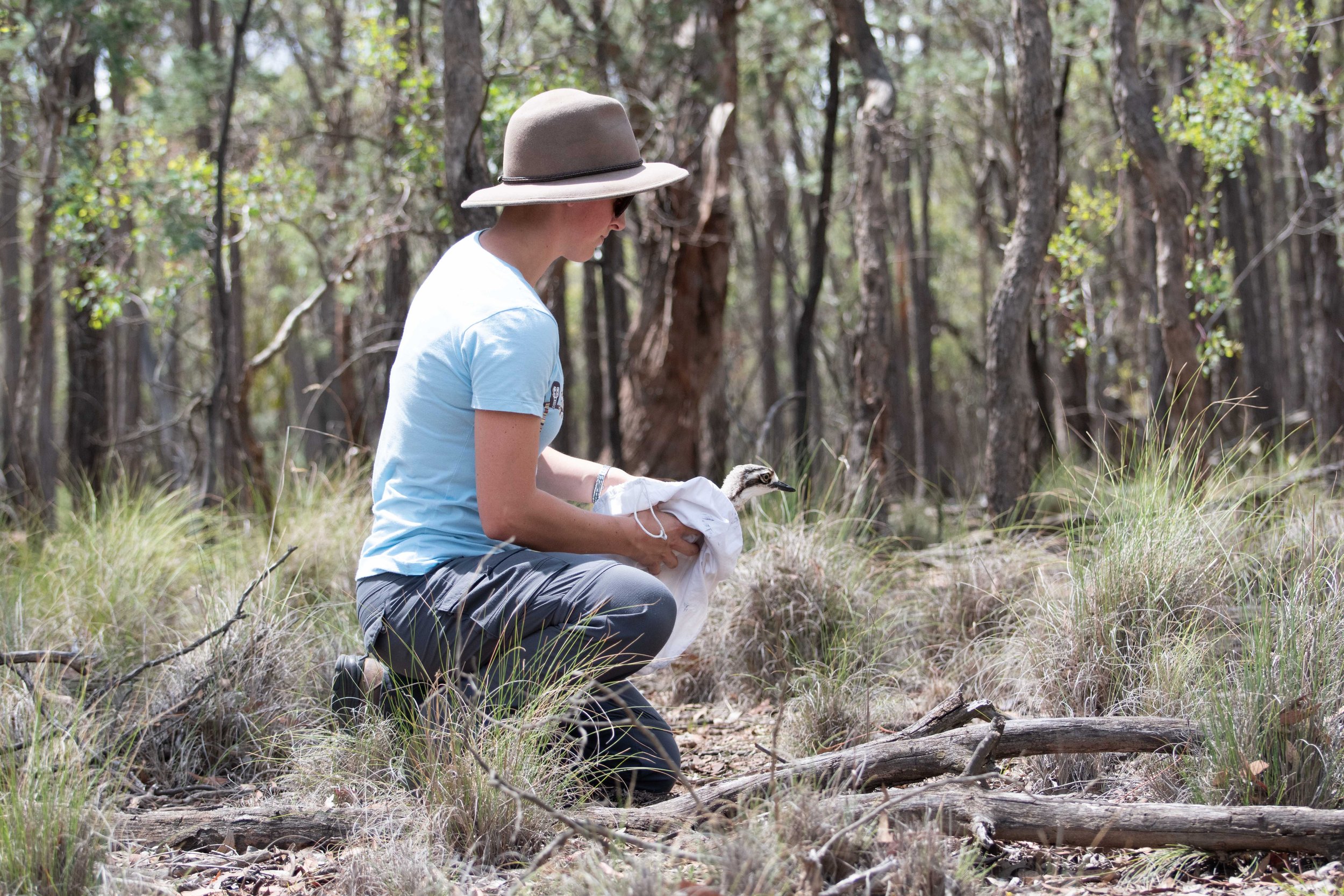
Translocation science
Bringing back biodiversity
Conservation translocations (i.e., moving species from one area to another) are a critical weapon in the fight against biodiversity loss.
Reintroductions are a type of translocation that aims to restore locally extinct species, and their ecological functions, back to their indigenous range.
Our work focuses on both (a) improving translocation outcomes for the target species, and (b) assessing the ecological outcomes (intentional and unintentional).
A tactical approach
We pioneered a translocation approach based on careful selection of strategies and tactics (Batson et al. 2015).
Strategies are the clearly defined objectives (e.g., reducing dispersal) and tactics are techniques using to influence post-release outcomes (e.g., release site and timing, number of individuals and where they’re from).
Learning by doing
We conduct all translocations within an iterative and adaptive management framework, where monitoring enables us to adapt out tactics ‘on-the-fly’.
For example, Wilson et al. (2020) adapted tactics for the reintroduction of eastern quolls to Mulligans Flat over three trials and improved survival from 29% in the first to 88% in the third.
Publications under this theme
Wilson et al. (2023) Roadmap to recovery revealed through the reintroduction of an IUCN Red List species. Biodiversity and Conservation, 32(1): 227—248.
Smith et al. (2023) Countering ecological misconceptions with strategic translocation and assessment of microhabitat use. Biological Conservation, 284: 110143.
Evans et al. (2023) Trends in animal translocation research. Ecography, 2023(3): e06528.
Evans et al. (2022) Reintroduction biology and the IUCN Red List: The dominance of species of Least Concern in the peer-reviewed literature. Global Ecology and Conservation, 38: e02242.
Wilson et al. (2022) Personality and plasticity predict post-release performance in a reintroduced mesopredator. Animal Behaviour 187: 177–189.
Wilson et al. (2020) Adapting reintroduction tactics in successive trials increases the likelihood of establishment for an endangered carnivore in a fenced sanctuary. PLOS One, 15(6): e0234455.
Abicair et al. (2020) Habitat selection and genetic diversity of a reintroduced ‘refugee species’. Animal Conservation, 23(3): 330—341.
Portas et al. (2020) Baseline health and disease assessment of founder eastern quolls (Dasyurus viverrinus) during a conservation translocation to mainland Australia. Journal of Wildlife Diseases, 56(3): 547–559.
Manning et al. (2019) Transition to density dependence in a reintroduced ecosystem engineer. Biodiversity and conservation, 28(14): 3803–3830.
Legge et al. (2018) Havens for threatened Australian mammals: The contributions of fenced areas and offshore islands to the protection of mammal species susceptible to introduced predators. Wildlife Research, 45(7): 627–644.
Batson et al. (2017) The effect of pre-release captivity on the stress physiology of a reintroduced population of wild eastern bettongs. Journal of Zoology, 303(4): 311–319.
Portas et al. (2016) Beyond morbidity and mortality in reintroduction programmes: changing health parameters in reintroduced eastern bettongs Bettongia gaimardi. Oryx, 50(4): 674—683.
Batson et al. (2016) The effect of pre-release captivity on post-release performance in reintroduced eastern bettongs Bettongia gaimardi. Oryx, 50(4): 664–673.
Batson et al. (2015) Translocation tactics: a framework to support the IUCN Guidelines for wildlife translocations and improve the quality of applied methods. Journal of Applied Ecology, 52(6): 1598—1607.
Portas et al. (2014) Health evaluation of free-ranging eastern bettongs (Bettongia gaimardi) during translocation for reintroduction in Australia. Journal of Wildlife Diseases, 50(2): 210–223.
Bennett et al. (2013) Causes of reintroduction failure of the brown treecreeper: Implications for ecosystem restoration. Austral Ecology, 38(6): 700–712.
Sheean et al. (2012) An assessment of scientific approaches towards species relocations in Australia. Austral Ecology, 37(2): 204–215.
Bennett et al. (2012) The anatomy of a failed reintroduction: A case study with the Brown Treecreeper. Emu, 112(4): 298–312.
Bennett et al. (2012) Habitat selection and post-release movement of reintroduced brown treecreeper individuals in restored temperate woodland. PLOS One, 7(12): e50612.









